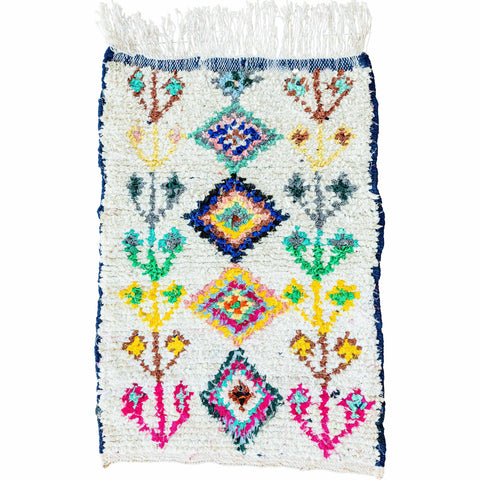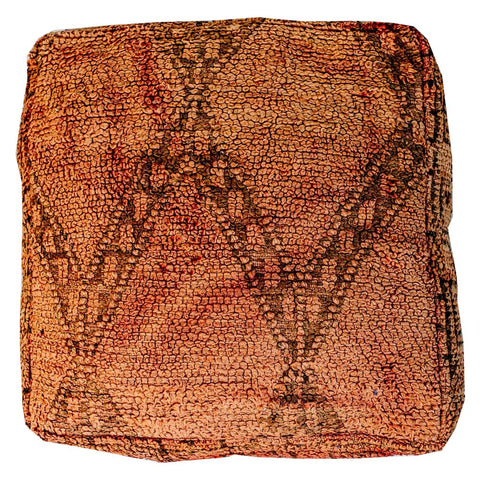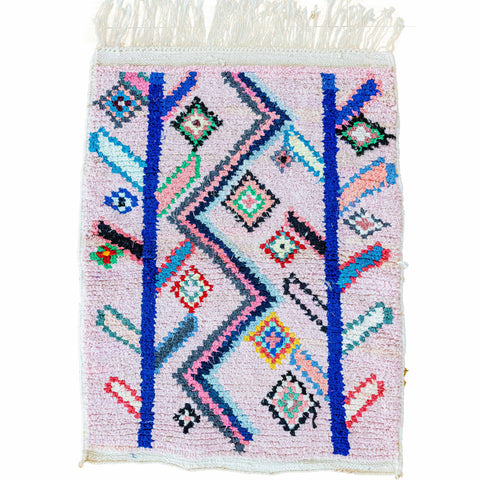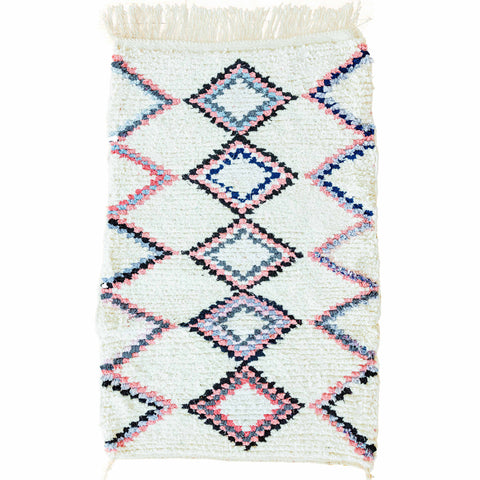Definitive Guide To Rug Shedding - How To Stop Rug Shedding?

Crafted by Berber artisans. Curated by decor enthusiasts
The definitive guide to rug shedding
Is this rug likely to shed? – this is a question people usually consider. At first, most people do not think about shedding when buying their rugs. However, with time, after seeing that your rugs shed, you then begin to think about it.
To start with, I will explain the type of rugs that usually undergo shedding and those that will not. Hopefully, those people looking to buy their rugs will find this post useful. However, no need to worry if you have purchased a rug, and it has a slight (or an intensive) shedding; I shall also be supplying useful tips on how to minimize it.
So to begin, what rugs undergo shedding, and why does this happen?
The handmade rugs versus the machine-made rugs
Rugs that are handmade are made from materials that are completely natural such as cotton, wool, and at times silk. These materials do not undergo shedding. Synthetic fibers (like nylon, acrylic, and viscose) regularly undergo shedding. Synthetic materials lack the strength to resist abrasion.
This means that when used, they undergo wear which causes them to undergo some serious shedding. The part that is somewhat confusing is that, at times, the handmade rugs, which are produced from natural-occurring materials, undergo light shedding during the first few months, which will stop. But, the machine-made/synthetic rugs do not first undergo any shedding, then with time, will undergo a period of massive shedding.
This is because a lot of synthetic rugs are created with the machine tufting process, which forces wool material through a base made of latex.
Since the foundation is produced from latex, there will be a gradual occurrence of cracking in the latex foundation. This will cause the wool to fall off the base. By contrast, the handmade rugs have each strand of wool knotted into the foundation of the cotton; this creates a connection that is strong enough to resist breakage.
Handmade rugs and rug shedding
Among hand-knotted rugs too, there are also varying levels of shedding.
Rugs with completely no shed
We mentioned these rugs previously; however, the rugs that completely lack any shed are the hand-knotted flatweave rugs, which are also called Moroccan rugs. They are shed-resistant because they do not have any pile.
What does a flatweave mean? Flatweave is used to describe a rug woven with the help of a loom instead of being knotted (with the hand gradually). It is produced through the vertical interlocking warp and horizontal weft threads. They are still largely produced with the hand – but they are done with a weaving pattern instead of using a knotting style.
Mild shedding
Next are the rugs that are frequent among all hand-knotted rugs, such as Indian rugs, Afghan rugs, and Persian rugs. These rugs come in various variants such as wool pile in the cotton foundation, 100% wool, wool and silk pile in the cotton foundation, 100% silk, and wool and silk pile in the silk foundation. Completely knotted with the hand, these rugs come with incredible strength. The foundation never loses the pile. There could be early shedding, but this will barely be noticeable.
First few months
The rugs which are grouped in this category include the Berber Beni Ourain Moroccan rugs. It is very important to mention that these Moroccan rugs are very much in vogue now and come in various quality. There are numerous “Moroccan Berber type” rugs that are being stocked out by a majority of big retailers.
These rugs are produced to look like the genuine Moroccan Berber type of rugs, but are not produced from the same authentic Moroccan wool and not made by hand.
Thus, just like the section about the handmade rugs versus the machine-made rugs, these rugs are more prone to shedding.
Then again, there are the variants that come with the “market quality.” These are Berber rugs that are genuine and are sold within the old cities of the Moroccan medinas. They are also sold by brokers through outlets like Etsy.
Whereas they can be original. A lot of these rugs make use of wool (dead wool) which are locally obtained in markets. Thus, these rugs have a high probability of undergoing shedding since the wool is loosely holding to the foundation and will fall off simply. This might slow down after some months; it can linger on for some time.
Atlas wool is mostly obtained from sheep found in higher altitudes, which produces wool with a longer length of the fiber. This then reduces the shedding amount and time. This type of rug usually undergoes shedding for the first three months; this is usually because the rug has a high amount of pile and the process of weaving always leaves off the excess fiber.
But, with time, this gets to stop as the Berber Beni Ourain Moroccan rugs retain their form over the following years and can handle a high amount of traffic. This why we have grouped into the category of the first few months. Therefore, that is the summary of the rugs that shed out their wool the most and the those with the least shedding.
The things are that if it seems that you bought a rug that is already undergo shedding, the following four important tips will be useful:
1). The Vacuum Technique
You should regularly vacuum your rugs. Takedown the vacuum setting to the lowest; this will get rid of excess fiber and stop the pulling out of extra fibers. Also, try not to use brush settings.
2). The Underlay
Get an underlay and use it. This will be used to prevent extra movements. This will then minimize the shedding. Be careful when choosing an underlay, as they can damage the floor and the rug if they appear too sticky. We have some excellent underlays in stock, so you can contact us to help you out.
3). The Soft Brush Rake
Use a soft brush broom/rake - as it will gradually remove the extra fibers without further pulling out of the foundation.
4). The Traffic
You can keep the rug in an area with low traffic. More running/walking/playing on the rug leads to more shedding.

































